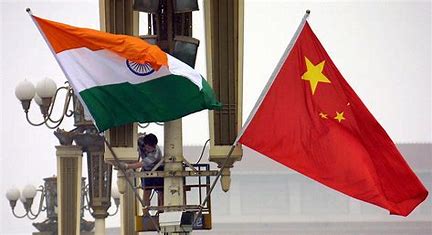NEW DELHI: Officials in India are in no hurry to return to pre-Galwan status with China regarding Chinese investments. While both India and China are working towards normalizing their diplomatic ties, the process of rebuilding trust will take time and will be based on a cautious approach.
The 2020 Galwan Valley clash, which resulted in the deaths of 20 Indian soldiers, has profoundly shaped India’s foreign and defence policies, leaving a lasting impact on bilateral relations. Officials have said that for the relationship to return to the pre-Galwan era will take considerable time.
The Galwan clash significantly shifted India’s approach to China and served as a wake-up call for the Indian government. This “paradigm” shift will continue to influence India’s strategies in the coming years, regardless of which party
One of the most significant shifts post-Galwan is India’s cautious approach to Chinese investment, a stance that is unlikely to change anytime soon. This remains the case even as both sides have agreed to move forward from the June 2020 border standoff, which at one point saw soldiers from opposite sides staring at each other at the eye level.
Prior to the clash, Chinese companies had expanded their presence in India’s economic sectors, including telecommunications, e-commerce, and technology. However, following the border tensions, India decided to implement stricter regulations on Chinese investments, particularly in sensitive sectors.
This policy led to the establishment of a robust framework to scrutinize foreign investments and ensure that Chinese capital does not enter sectors deemed critical to national security.
As one of the world’s largest consumer markets, India holds immense economic potential for China whose global market has shrunk rapidly in the last five years in wake of the US-led policies, but the Galwan incident has made policymakers wary of allowing Chinese investments to flow in too quickly.
“We are moving cautiously,” said a senior government official. “While normalization of ties is progressing, the trust that existed before Galwan is not something that can be rebuilt overnight. Our primary concern is national security, and we need time to ensure that economic engagements do not compromise that.”
While the cautious approach to investment continues, the Galwan clash has, in some ways, been a blessing in disguise, as it forced India to reassess its defence and economic strategies, particularly regarding its reliance on Chinese imports.
In the last four and a half years, India has made significant strides in strengthening domestic manufacturing and reducing dependence on China, especially in sectors like electronics and pharmaceuticals. India has also worked to diversify its supply chains away from China’s dominance.
“The Galwan clash was a turning point,” said a senior official in intelligence. “Without it, we may not have focused so intensely on bolstering our defences and protecting our economy from external risks. It made us rethink our priorities and address vulnerabilities that were previously overlooked.”
The impact of Galwan was also evident in India’s military preparedness. Prior to the clash, skirmishes along the Line of Actual Control (LAC) were often resolved at the local level, with limited involvement from Delhi. However, Galwan highlighted the strategic vulnerabilities along the border, prompting India to invest in border infrastructure and military modernization. The focus shifted to improving logistical capabilities, upgrading equipment, and ramping up infrastructure in border areas to ensure quicker mobilization during a crisis.
“The Galwan incident served as a wake-up call,” the intelligence official added. “It forced us to prioritize defence capabilities and to be better prepared for future challenges.”
According to the official, even now, there are no clear answers as to what the Chinese commanders and decision-makers gained from engaging in this type of dispute with India. This is surprising, as it contrasts with the typical Chinese approach, which is known for being calculated, result-oriented, and measured, with a clear idea of what they want, how they want it, and when to stop.
“We aim to build a stable framework for future engagement with China, but rebuilding trust will take time, and I think China too realizes this. Both the leadership and public opinion in India have been shaped by the events of Galwan, and that cannot change overnight,” the official added.
India in no hurry to reach pre-Galwan level Chinese investment
इस शब्द का अर्थ जानिये
- Advertisement -

